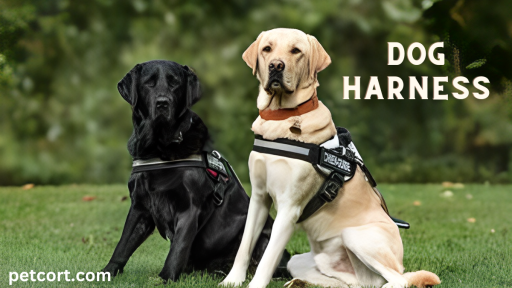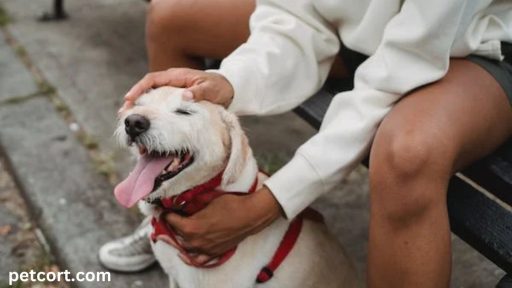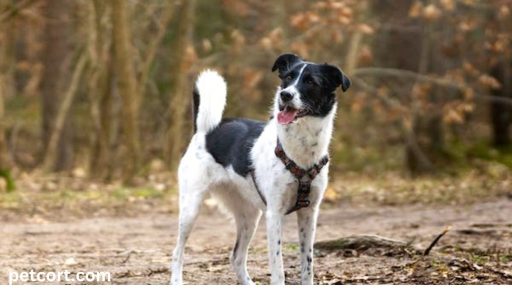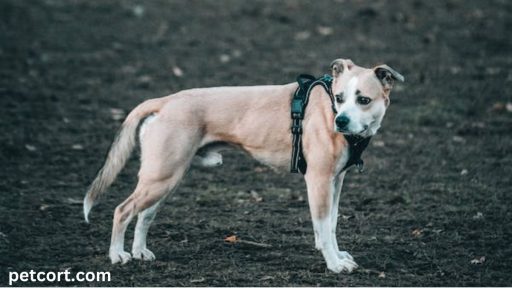
Having an easy-wear dog harness that your pup is comfortable in makes going for walks, car rides, and adventures so much more enjoyable for both of you. But with so many options on the market, how do you choose the right harness for your dog? This comprehensive guide will walk you through everything you need to know to find the perfect easy-wear dog harness for your furry friend.
Contents
- 1 What is an Easy-Wear Dog Harness?
- 2 Benefits of an Easy-Wear Dog Harness
- 3 Types of Easy-Wear Dog Harnesses
- 4 Factors to Consider When Choosing an Easy-Wear Dog Harness
- 5 How to Measure Your Dog for an Easy-Wear Harness
- 6 How to Correctly Put on and Fit an Easy-Wear Dog Harness
- 7 Top 5 Easy-Wear Dog Harnesses
- 8 Conclusion
- 9 Here are five brief frequently asked questions and answers about easy-wear dog harnesses:
What is an Easy-Wear Dog Harness?
An easy-wear dog harness is designed for simplicity and comfort when getting your dog geared up for activities. Here are the key features of an easy-wear harness:
- Easy to put on and take off. Slip-on designs without buckles or clasps allow you to get your dog in and out of the harness quickly.
- Adjustable for a custom fit. Straps are adjustable to get a secure but comfortable fit around your dog’s chest and body.
- Minimal design. Easy-wear harnesses have a streamlined design that avoids restricting your dog’s movement.
- Comfortable materials. Padding and breathable mesh or fabric make the harness comfy for your dog to wear.
- No pull features. Some include a front clip or attachments to discourage pulling during leash walks.
The right easy-wear harness makes walks and other adventures with your dog a breeze!
Benefits of an Easy-Wear Dog Harness
Switching to an easy-wear dog harness has some great benefits for both you and your furry friend:
For You:
- Quick to put on. Simply slip it over your dog’s head and clip or attach straps rather than fussing with buckles.
- Hassle-free sizing. Adjustable straps allow you to customize the fit as needed for growing puppies or dogs with seasonal weight changes.
- Avoid escapes. Easy-wear designs properly fitted prevent your dog from backing out of the harness.
For Your Dog:
- Comfortable. Padding and breathable materials are gentle on your dog’s chest and underarms.
- Full mobility. The minimal design does not restrict your dog’s natural movements.
- No choking. Easy-wear harnesses disperse pressure across the chest rather than the neck when leash training.
- Reduced pulling. Versatile clip locations curb your dog’s urge to pull during walks.
Both owner and dog benefit from the convenience and comfort of an easy-wear harness!

Types of Easy-Wear Dog Harnesses
There are a few main types of easy-wear dog harnesses to consider:
1. Step-in Harness
This popular easy-wear style has straps that slide over your dog’s head and clip or attach around the body. Often with padded chest plates and belly bands, step-in harnesses provide control and comfort for adventures.
Examples: Kurgo Tru-Fit, Ruffwear Front Range, Blue-9 Balance
2. Slip Lead Harness
A leash with a built-in loop slides over your dog’s head to rest behind the front legs in this simple design. Great for smaller dogs, slip leads evenly distribute pressure but offer less control than other options.
Examples: Rabbitgoo No Pull, PUPTECK No Pull
3. Vest Harness
Vest harnesses look and function like an easy-to-wear sleeveless jacket, typically with Velcro or snap closures. They distribute pressure widely over the torso and allow a full range of motion.
Examples: EzyDog Chest Plate, OneTigris Tactical Vest
4. Car Harness
These specialized harnesses are designed specifically to safely restrain dogs while traveling in vehicles. They hook into seat belt systems and limit hind leg movement.
Examples: Sleepypod ClickIt, Kurgo Tru-Fit Crash Tested

Factors to Consider When Choosing an Easy-Wear Dog Harness
With so many options for easy-wear dog harnesses, it’s important to keep these factors in mind while shopping to find the best match:
Size and Fit
Be sure to measure your dog and select a size according to the manufacturer’s guidelines for a proper fit. Adjustable straps allow you to customize the fit. Check that the harness sits securely without choking when your dog is standing and lying down.
Material
Look for lightweight, breathable fabric-like mesh that will be gentle on your dog’s coat. Padding along the chest plate and belly band also boosts comfort. Reflective strips can help with visibility at night.
Durability
Opt for robust hardware like metal dual-ring leash attachments and heavy-duty stitching that will withstand serious pulling and adventures. Avoid flimsy plastic clips or rings.
Security Features
Easy-wear harnesses should properly contain your dog. Step-in designs often have Velcro closures on the neck and chest straps to prevent escape.
Intended Use
If you need a harness just for quick walks, a simple step-in design will suffice. For leash training or running, choose an option with multiple leash clip points to help control pulling.
Your Dog’s Needs
Factor in your dog’s age, activity level, and behavioral quirks. For instance, senior dogs need gentle support while high-energy pups do best with durable, secure hardware.
Taking these considerations into account will help you select the perfect easy-wear harness for your pup!

How to Measure Your Dog for an Easy-Wear Harness
Measuring your dog is crucial to achieving the ideal fit with an easy-wear harness. Follow these steps:
1. Measure the Chest
With your dog standing, wrap a soft measuring tape around the widest part of the chest behind the front legs. For the most accurate fit, keep the tape moderately snug.
2. Measure Length
Run the measuring tape from where you want the harness to lay at the back of the neck, along the back to the base of the tail.
3. Measure the Neck
Wrap the tape around the neck right behind the ears to get the circumference. Leave room for two adult fingers between the tape and neck.
4. Weight
Weigh your dog at home or at the vet to determine size based on manufacturer weight guidelines.
Match your measurements up to the manufacturer’s sizing chart to select the right size. Growth charts for puppies will provide upcoming size predictions. Re-measure your dog every few months for the best ongoing fit, especially during growth spurts.
Read Also: Raw Diet For Dogs: Important Steps To Get Started
How to Correctly Put on and Fit an Easy-Wear Dog Harness
Getting the right fit with your easy-wear dog harness ensures your dog’s comfort and safety. Follow these tips for properly putting on and fitting the harness:
1. Make Sure It’s Fully Unfastened
Undo all buckles, straps, Velcro, or clasps so the harness is completely open and ready to slide on.
2. Slide the Harness Over the Head
Gently guide your dog’s head through the neck opening, then slide the harness down over the shoulders.
3. Position It Properly
The chest plate should sit along the breastbone, not too high or low. Make sure straps lay flat against the body.
4. Fasten and Adjust Straps
Clip together or attach all buckles, Velcro, or straps starting at the neck and working back. Tighten or loosen to achieve a snug fit.
5. Check for Comfort
Make sure you can slide two fingers between the straps and your dog’s body. Your pup should have a free range of motion.
6. Attach the Leash
Clip your leash to the ring located on the chest plate or back as intended for your harness.
7. Monitor and Adjust as Needed
Check the fit regularly during walks, making further adjustments to maintain a secure yet comfortable fit.
Getting the harness on correctly will keep your dog safe and happy on all of your adventures together!

Top 5 Easy-Wear Dog Harnesses
To help you narrow down the options, here are 5 of the best easy-wear dog harnesses to consider for your pup:
1. Kurgo Tru-Fit Smart Dog Walking Dog Harness
| Pros | Cons |
| Five adjustable points for custom fit | Buckles can be tricky for some dogs |
| Lightweight and padded for comfort | Only for dogs up to 110 lbs |
| Stops pulling with front leash clip | May not fit giant breeds properly |
| Machine washable |
2. Ruffwear Front Range Dog Harness
| Pros | Cons |
| Padded and breathable | Sizing can be tricky |
| Reinforced webbing for strength | More expensive than other brands |
| Great for escape artist dogs | Limited large-size options |
| Reflective trim |
3. Rabbitgoo No-Pull Dog Harness
| Pros | Cons |
| Affordable price | May not fit giant breeds well |
| Adjustable for custom fit | Limited padding |
| Quick snap buckles | Not the most durable for serious pullers |
| Range of colors |
4. Blue-9 Balance Dog Harness
| Pros | Cons |
| Minimal “barely there” design | Sizing can be tricky |
| Evenly distributes pressure | Optional handles cost an extra |
| Encourages natural movement | |
| Machine washable |
5. EzyDog Quick Fit Custom Fit Dog Harness
| Pros | Cons |
| Snug “hugging” fit | Limited size range |
| One-click latch system | May not suit dogs who pull |
| Neoprene padded | Slightly expensive |
| Adjusts for growing puppies |
Conclusion
The versatility of easy-wear dog harnesses makes them useful for everything from casual walks to intense adventures with your furry friend. Whether a simple step-in or a heavy-duty tactical vest, there’s an easy harness to suit your pup. Focus on fit, comfort, durability, and your dog’s needs when selecting the perfect option. With the help of this guide, you’ll be able to discover the ideal easy-wear harness to keep your dog safe, secure, and comfortable on all of your exploits together.
Read Also: Does your dog give you the side-eye? Here’s what it means.
Here are five brief frequently asked questions and answers about easy-wear dog harnesses:
1. What are the main benefits of an easy-wear dog harness?
Easy-wear dog harnesses are quick and simple to put on, adjustable for a custom fit, designed for comfort, and allow dogs full range of motion while discouraging pulling on the leash.
2. How do I get the right size harness for my dog?
Carefully measure your dog’s chest, length, and neck circumference. Compare to size charts from manufacturers to select the closest fit for your dog.
3. Where should an easy-wear harness sit on a dog’s body?
The chest plate should lay along the breastbone behind the front legs. The rest of the harness should sit securely but comfortably without restricting movement.
4. What features should I look for in an easy-wear harness?
Prioritize adjustable straps, padded but breathable fabric, durable hardware, and design features to reduce pulling based on your dog’s needs.
5. How do I know if my dog doesn’t like their easy-wear harness?
Signs of dislike include trying to rub off the harness, chewing straps, barking/whining during harnessing or refusing to move once it’s on. Try a different style or size.






